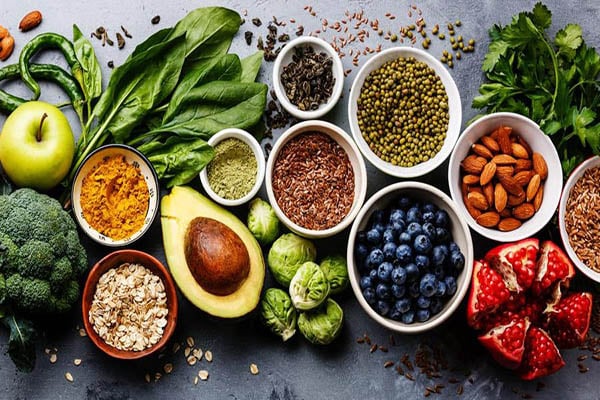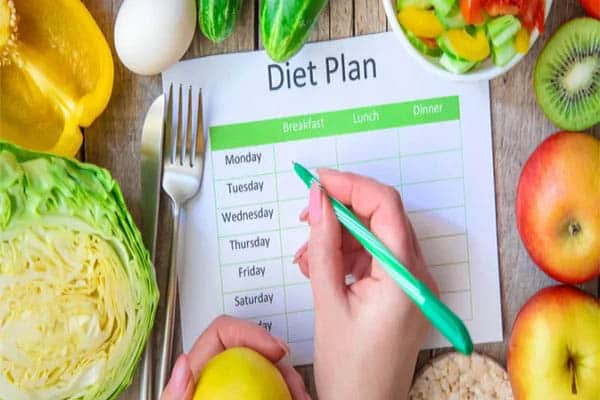
Guide You For Weight Loss:- Are you looking to lose weight but don’t know where to start? You’ve come to the right place! This guide is designed to provide you with the information and strategies you need to successfully lose weight and keep it off.
Here, you will find a comprehensive overview of the foods and diets that work best for weight loss, as well as tips and tricks to help you create a personalized plan that works for you. With this guide, you will learn proven strategies to help you make lasting lifestyle changes, so you can finally achieve your weight loss goals for good. So, read on to get started on your weight loss journey!
Guide You For Weight Loss
1) The Basics of Weight Loss
In order to successfully lose weight, it’s important to understand the basics of weight loss. Weight loss occurs when the amount of energy expended (via metabolism and physical activity) exceeds the amount of energy consumed (via food). As such, there are two key factors involved in weight loss: energy expenditure and energy intake. Energy expenditure – To lose weight, you must produce more energy than you consume.
This can be achieved by increasing your energy expenditure through exercise, or by decreasing your energy expenditure through activities that don’t require much energy (e.g. sleeping, resting, etc.). Energy intake – To lose weight, you must also consume fewer calories than you burn. The number of calories you need per day depends on a variety of factors, including your age, gender, height, and current weight.

2) Foods for Weight Loss
As discussed above, there are two key factors involved in successful weight loss: energy expenditure and energy intake. When it comes to energy intake, the types of foods you consume play a key role. In order to lose weight, you need to consume fewer calories than you burn each day. Therefore, it is important to choose foods that are high in nutritional value but low in calories, thereby helping you to meet your daily energy requirements while staying within your daily calorie budget.
The following list provides examples of foods that are high in nutritional value and low in calories: Fruits and vegetables – Fruits and vegetables are rich in vitamins, minerals, and fiber, and are therefore considered “nutrient-dense” foods. They are also low in calories, making them a great choice for weight loss. Whole grains – Whole grains (e.g. oats, quinoa, whole wheat, etc.) are rich in fibre and important vitamins and minerals.
Healthy fats (e.g. avocados, nuts, seeds, fish) – Healthy fats are important for the functioning of the human body, and should therefore be included in a healthy diet. However, they are also very caloric, so they should be consumed in moderation.

3) Diet Plans for Weight Loss
When it comes to energy expenditure, there are a number of popular diet plans that have proven effective for weight loss. The following list provides examples of common diet plans that can be used for weight loss: Low-carbohydrate diets – Low-carbohydrate diets are effective for weight loss because they help you to consume less energy. For best results, it is recommended that you replace carbs with proteins, healthy fats, and fibrous vegetables. Low-fat diets – Low-fat diets are effective for weight loss because they help you to consume less energy.
For best results, it is recommended that you consume whole grains, fruits, and vegetables, and avoid processed foods. High-fibre diets – High-fibre diets are effective for weight loss because they help you to consume less energy. For best results, it is recommended that you consume foods that are high in fibre, such as fruits, vegetables, and whole grains.
High-protein diets – High-protein diets are effective for weight loss because they help you to consume less energy. For best results, it is recommended that you consume foods that are high in protein, such as fish, chicken, eggs, and nuts.

4) Exercise for Weight Loss
As discussed above, it is important to increase your energy expenditure through regular exercise when following a low-calorie diet in order to achieve weight loss. However, not all exercise is created equal, and different types of exercise will result in different amounts of energy expended. Therefore, it is important to choose the right type of exercise for your weight loss goals.
The following list provides examples of exercise types that are best for weight loss: Low-impact exercises – Low-impact exercises, such as swimming, are great for weight loss because they don’t place much strain on the joints, which means that you can do them for longer without feeling tired. Strength training – Strength training is another great exercise for weight loss because it builds muscle, which helps to increase your resting metabolic rate, meaning that you burn more calories even when you’re resting.
High-impact exercises – High-impact exercises, such as running, are not ideal for weight loss because they place a lot of strain on the joints. This can lead to injury, which can cause you to miss out on exercising altogether.

5) Tips and Tricks for Long-Term Weight Loss
Finally, once you have reached your weight loss goal, it is important to remember that it is essential to maintain a healthy diet and exercise routine in order to maintain your new weight. In order to prevent weight gain in the long term, it is recommended that you follow a “balanced” diet that includes all the major food groups, and exercise regularly.
It is also important to remember that weight loss is not a walk in the park, and that it requires a lot of effort and dedication. For this reason, it is recommended that you seek guidance from a professional dietitian or personal trainer when beginning your journey towards weight loss. In conclusion, weight loss is possible, but it requires a lot of effort and sacrifice.
In order to achieve your goals, it is important to follow a balanced diet, engage in regular exercise, and follow a regular routine that you can stick to.

Also refer:- Best 6 Benefits of Purchasing Health Insurance


.jfif)
No comments:
Post a Comment